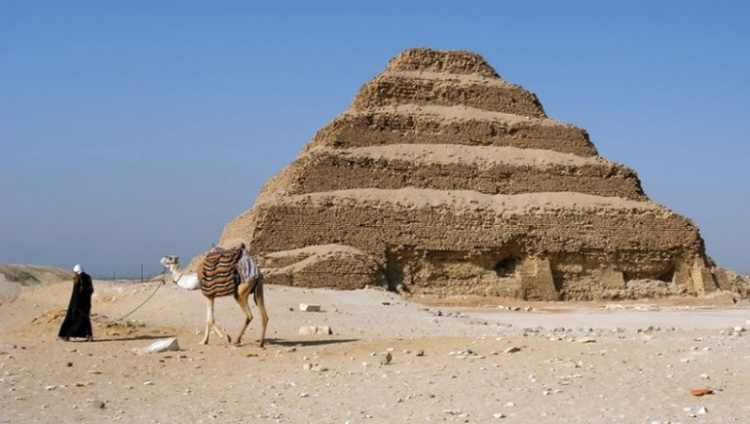Our world is an alluring canvas filled with wonders combining history, art and architecture. From antiquity to our modern day, the list of the world’s wonders document our history on earth like pieces of one giant puzzle. These wonders are a representation of global heritage and serves as a tribute to the human wealth of knowledge, invention and inspiration. We have compiled a list of world wonder’s from the Middle East, keep reading to find out more about the history and beauty of these enticing monuments to catch on your next trip.
The great pyramid of Giza – Egypt
The pyramids of Giza, on the top of any world wonder list, the most prominent and well known world wonder. It is the only ancient wonder still standing today. For more than 4000 years, the great pyramid of Giza was considered the tallest building in the world. Built around 2560 B.C.E. on the west bank of the Nile River, the great pyramid acted as the burial place of the fourth-century Pharaoh Khufu. Standing at 147m in height and weighing approximately 5.75 million tons, it is the largest of the three pyramids of Giza. The pyramid structure took over 20 years to develop and almost 2.3 million stone blocks were used to build it. The interior of the pyramid contains passageways leading to the burial chambers of the King. What still remains a mystery is how the ancient Egyptians managed to build such a iconic structure without the tools and technology of our modern architecture. That is why the pyramids serve as a testament for ancient Egyptian’s wealth of knowledge.
Kerak of the Crusaders – Jordan
Surrounded by the ancient kings highway from the east and the Dead Sea from the west, is the salient Crusaders castle of Kerak. Located in Jordan, the fortified castle overlooks the provincial town of Kerak. The castle which sits 900m above sea level has a rich history to be told. It traces back to the 12th century, as it was built in 1140. A christian religious group known as the Crusaders, carried out military expeditions during the middle ages and took the castle as an outpost. A year later, the castle fell into the hands of Arab-Kurdish soldiers. Throughout the years, as it’s settlers changed , the castle’s features also changed. For the period it was taken over by the Mamelukes, they expanded the moat, built more towers and used yellow like limestone. The Ottomans constructed a grandiose entrance gate and the Crusader’s built with roughly cut dark rocks. The castle itself is considered a demonstration of the Crusader’s outstanding military architecture, as it is built on top of a narrow hilltop and surrounded by forts.
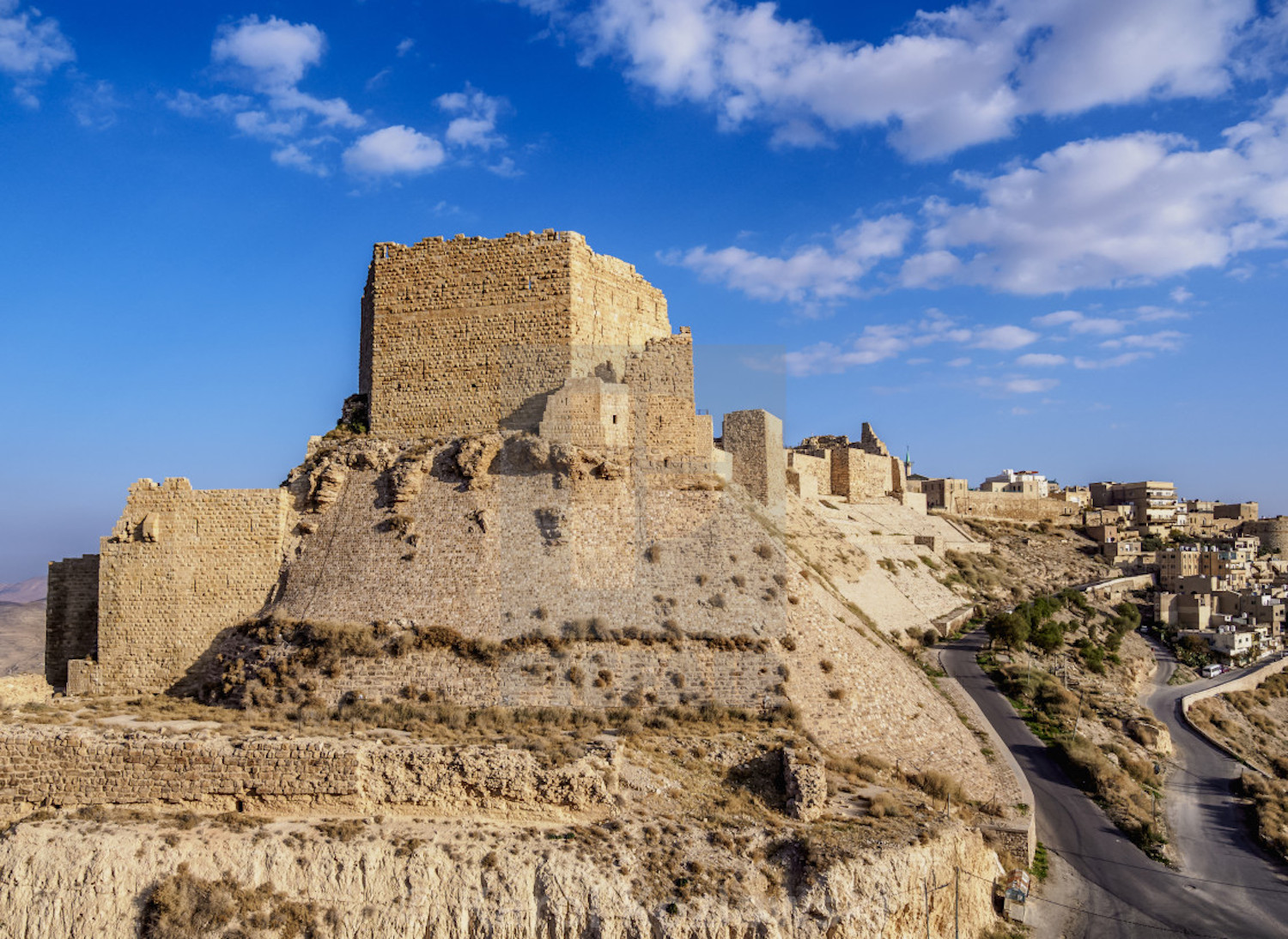
The city of Petra – Jordan
Considered a national treasure of Jordan and located just three hours south of Amman, the ancient city of Petra is considered one of the most popular tourist destinations in the country. The city dates back to the 4th century BC and was inhabited by the Nabataeans, an Arabian nomad group that often moved from one place to another. In an attempt to show of their wealth which was accumulated through trade, the Nabataeans built the masterpiece that is Petra. With striking tombs, monuments, and houses that were beautifully carved into the cliffs, the city has an enchanting vibe. It is known as the “rose city”, due to it’s red color of the stone in which it’s been carved. Entrance to the city is through the “Siq“, a 1 km passage embedded within the mountains as the rocks faces you on both sides. The Siq takes you to the treasury, one of Petra’s icons. The treasury or “Al-Khazneh” in Arabic, is an architectural structure with a spectacular facade that still retains it elaborate rock-cut tombs and detailed carving of mystical figures till our modern day. Be sure to get their early to view the full facade before being crowded by tourists. Petra has been a UNESCO world heritage site since 1985 and was named one of the world Seven wonders in 2007.
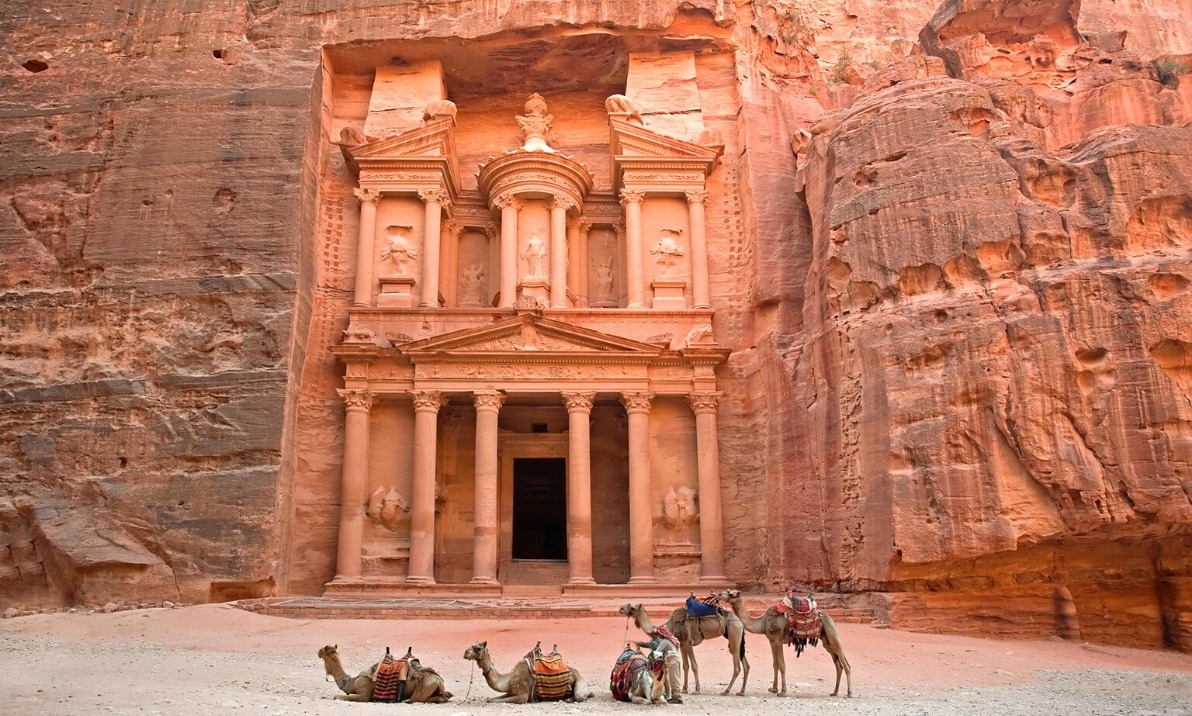
Sabratha – Libya
Located west of Tripoli, Libya , is the remnants of the ancient city of Sabratha. Due to it’s archaeological site and prime location on the Mediterranean, Sabratha has been a trading post for the Saharan trade. The city was under Roman control after managing to conquer it from the Numidian Kingdom of Massinissa. The Romans rebuilt the city during the 2nd and 3rd century A.D. Amongst the most notable structures that the Romans built is a theatre , which still stands till this day. The theatre could accommodate an audience of five thousand people and is considered an architectural monument representing the influence of the Romans in the city. Spotted on the coast of Sabratha are several salt water baths that are an indication of the lavish lifestyle lived by the Romans. Following the rule of the Romans, the Arabs took over the city in the seventh century A.D yet, the city has had already lost it’s power due to a devastating earthquake during the 4th century. The city was later reconstructed in the 20th century by Italians and became a UNESCO world heritage site in 1982.
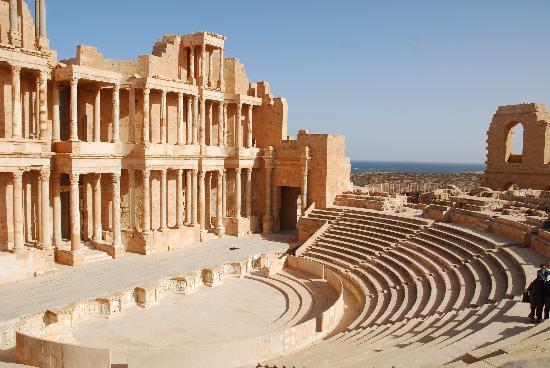
Saqqara – Egypt
The Saqqara is one of the most prominent areas with ancient burial grounds. Located 30km south of Cairo the Saqqara desert is home to the ancient step pyramids. Ancient Egyptians considered Saqqara their cemetery, and that says a lot about it’s significance because in their time, where one was buried is a getaway to the sacred after life. Burying at the Saqarra began at the first dynasty, but it wasn’t till the second dynasty when it became a cemetery for the kings. The famous step pyramid of Saqqara which still stands tall, acted as a cemetery for King Djoser and was built in the 27th century B.C. It is considered the most ancient structure constructed from hewn stone. When paying a visit to the Saqqara area be sure to visit the newly opened Imhotep Museum. Also, not to miss at the Saqqara is the tomb of the Mereruka, a high profile political advisor to king Teti of the sixth dynasty. The Saqqara necropolis continues to uncover it’s secret, as the Egyptian government continues to unveil the discovery of new tombs. Even Netflix has recognized the beauty of the Saqqara tombs, subsequently releasing a documentary named “secrets of the Saqqara tombs.”

Marrakesh – Morocco
Marrakesh, Morocco is one of North Africa’s most sought after destinations. The “red city” is surely where one could live the Arabian fantasy. It was founded in 1062 by leader of the Moroccan Almoravid empire, Yusuf ibn Tashfin. It is one of the most significant imperial cities in Morocco and holds an illustrious history. Marrakesh’s strong political, economical and cultural presence has previously been witnessed throughout the western Muslim world, in North Africa and the Andalusia. The Medina of Marrakesh is a UNESCO World Heritage Site. The city’s rich history has led to it hosting some of the country’s most spectacular and alluring monuments and attractions. Amongst these monuments is Jemaa el-Fnaa Square; the busiest marketplace in Marrakesh, the Saadian Tombs; a royal necropolis and Bahia palace; a 9th-century palace with striking geometric patterns and arabesque style. Also accounting to the city’s enchanting beauty is it’s location at the foothill of the grandiose Atlas mountains.
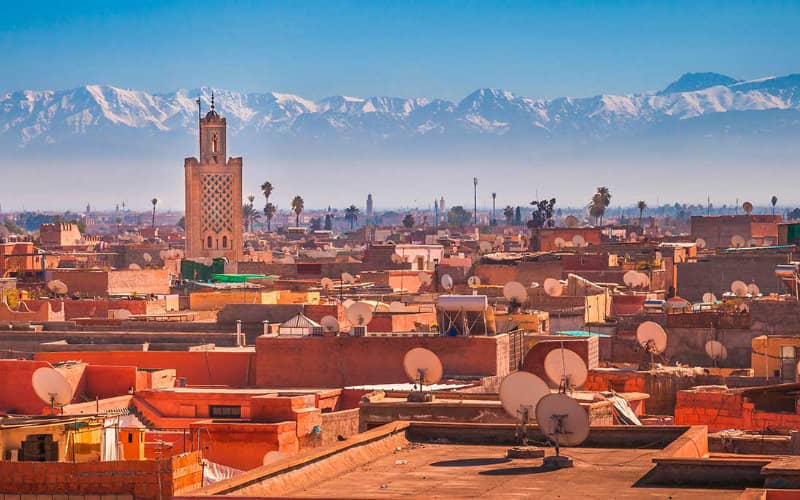
Mecca and the Kaaba – Saudi Arabia
Mecca, the holiest city in the religion of Islam. The city located in Saudi Arabia is where millions of muslims carry out the islamic pilgrimages of “haj” and “umra”. All capable Muslims carry out “Hajj” in Mecca at least once in their lifetime. What also strikes about this wonder is the diversity of muslims coming together from all around the world in union. Mecca was the birthplace of prophet Muhammad and witnessed his first revelation of the Quraan. Home of the “Kaaba”, islam’s most sacred site representing god’s house in a a metaphorical sense. Muslims around the world face toward the Kaaba during their five daily prayers. The cubic structure of the Kaaba circled by people praying makes for a breathtaking spiritual picture. Considered a world wonder for it’s historical, religious and architectural significance, the city remains one of the most conserved and unchanged. Yet, the city has been seeing some renovations and expansions especially of the Kaaba to accommodate for the large amount of muslims that visit every year.
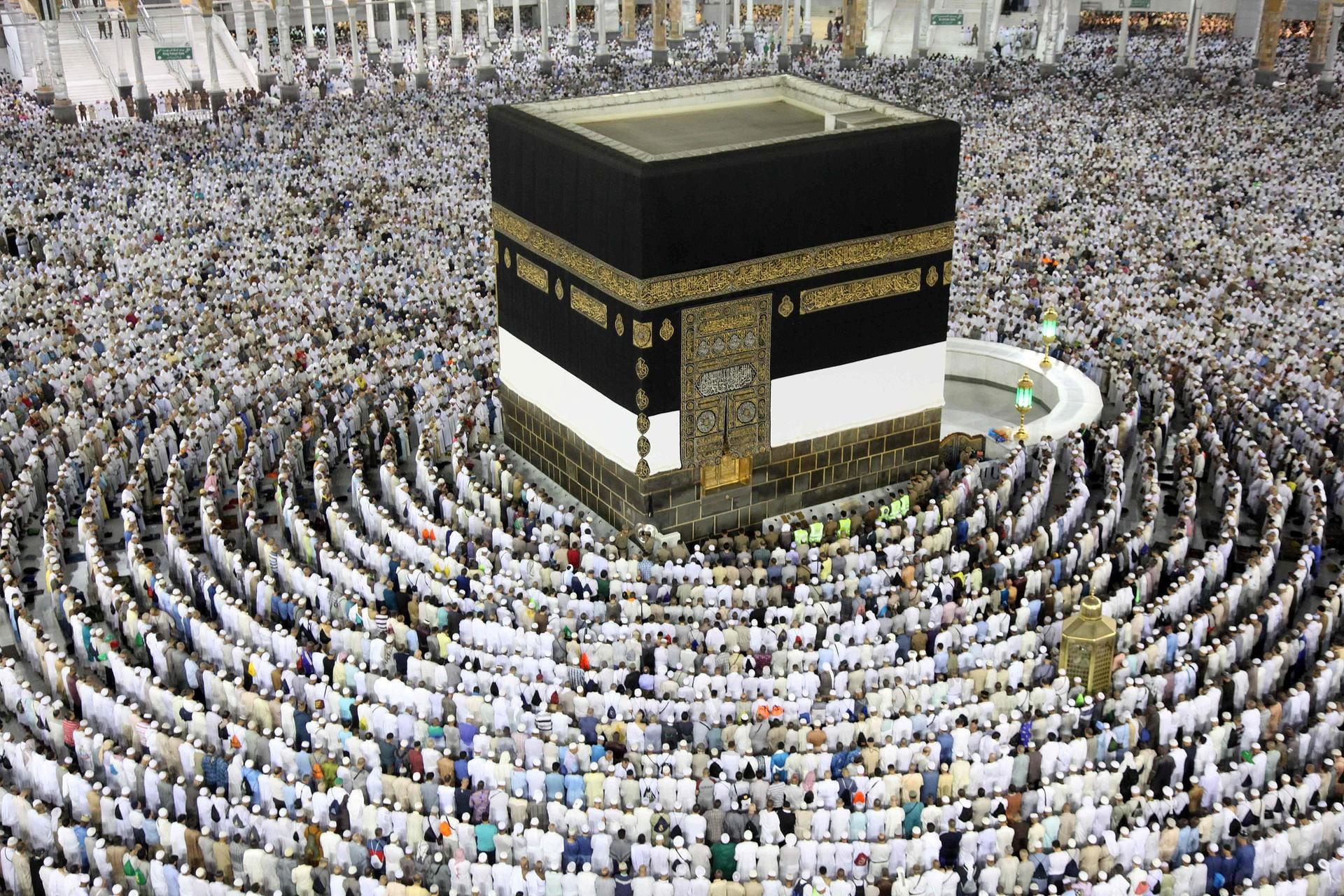
Urgup – Turkey
Urgup is a little town in central Cappadocia, Turkey. It was once ruled by Alexander the Great before being conquered by the Romans and sooner than later Christianity arrived in Urgup region. In the Etlier valley area one can still find the the traditional cave churches that Christians used to pray in. Urgup was then conquered by the Ottomons. Considered a geological attraction, Urgup has been known for it’s cone forms known as ‘Fairy Chimneys’. These cones are the outcome of lava formations from an erupted volcano near the area. The erosion of floodwater which flowed down the valley sides and the powerful winds covered the volcanic rocks, consequently creating this spectacular landscape . Nowadays, it’s a particularly tourist-friendly attraction because of its cave dwellings that can be observed throughout the town. Embedded within these cone structures, are hotels and cave rooms that tourists can enjoy staying at.

Najran – Saudi Arabia
Najran’s origins can be traced back to more than 4000 years when the Romans conquered the city, located south of Saudi Arabia near the border of Yemen. It was at the centre of the incense trade route, which stretched across the Mediterranean trading incense, spices and other luxury goods. The city was first inhabited by Christian and Jewish settlers before the Islamic period. They then signed the Najran agreement with prophet Muhammed that had them protected. Known as the Yemni centre for cloth making, this was where the “kiswa”, the fabric that covered the Kaaba used to be made. In 1924, the city officially became part of Saudi Arabia. Amongst it’s most popular attractions is Al Ukhdood archaeological site which dates back to over 2000 years. The site includes various artefacts and engraved drawings of a horse, a camel, snakes, and a human hand, the remains of a mosque have also been found. What strikes most is the city’s vernacular architecture seeing it’s mud houses and buildings.

Apollonia – Libya
Apollonia was founded towards the end of the seventh century. It was part of Cyrene, an ancient Greek and Roman city located in Easter Libya. Amongst it’s attractions is a theatre which lies on the border of the Mediterranean Sea. It dates back from the Hellenistic period, the theatre was restructured = under the emperor Domitian and is amongst the most preserved theatres in the area. Apollonia is known for hosting the remains of four spectacular churches dating from the Byzantine period. The most prominent is a church that dates back to the 5th century. That is because of it’s preserved marble columns that originally come from an ancient Greek island named Euboea. The governor’s palace which also dates back to the Byzantine period is another gem of the city. In it, is a marble inscription that mentions the palace was a home for a Roman military commander.
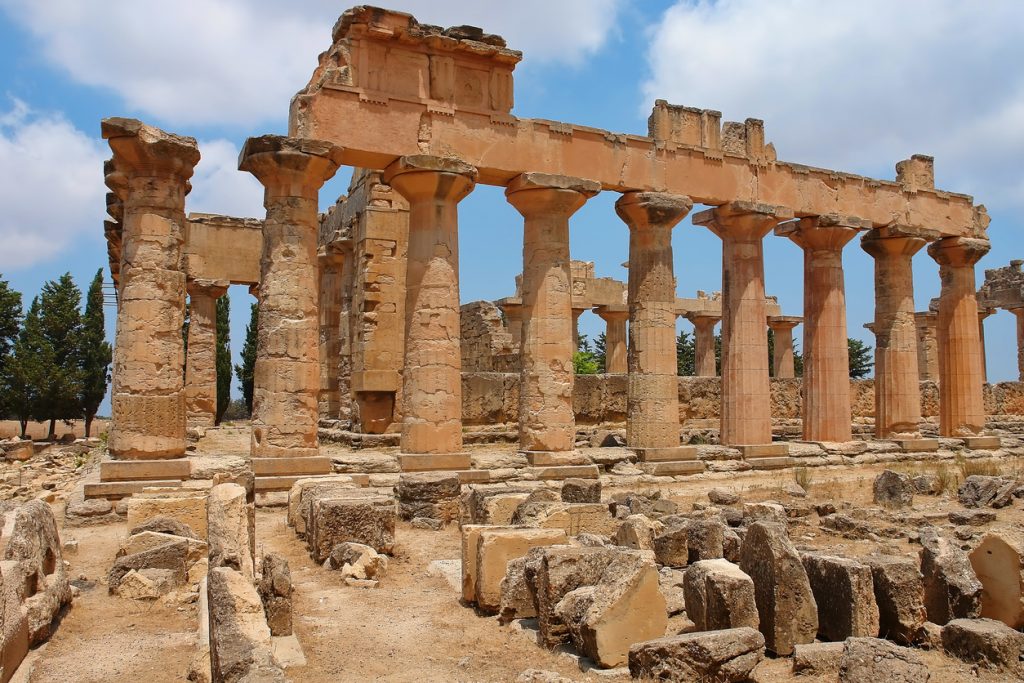
Our region is truly blessed with some of the world’s greatest wonders, each with a unique story, history and architecture.
WE SAID THIS: Don’t forget… The Lost City: 6 Mystical Sites To Experience In Petra


